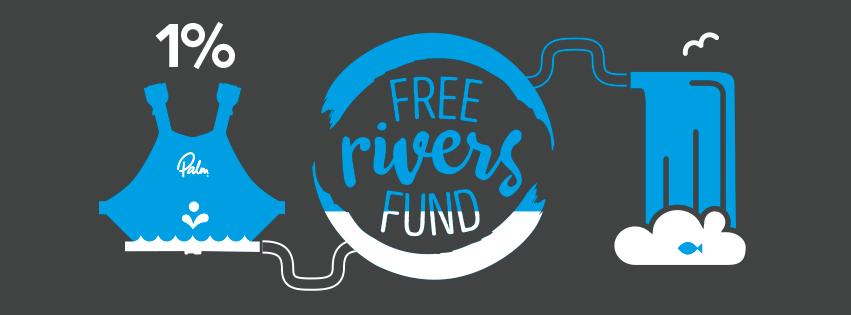Your PFD (personal floatation device) is essential … floating you up to take a breath; giving your rescuer something firm to grasp hold of and pull to safety; somewhere for you to keep your rescue equipment (without being a snag hazard); and for whitewater rescues, including a quick release chest harness that you can use to safely tether to a line for bank backup or entering the water as live bait.
Whitewater is a team sport when it comes to preventing accidents and getting out of sticky situations. Practice and training for rescue situations is key to a confident, competent, speedy and inventive solutions. Appropriate clothing and equipment will give you an advantage.
Palm rescue PFDs
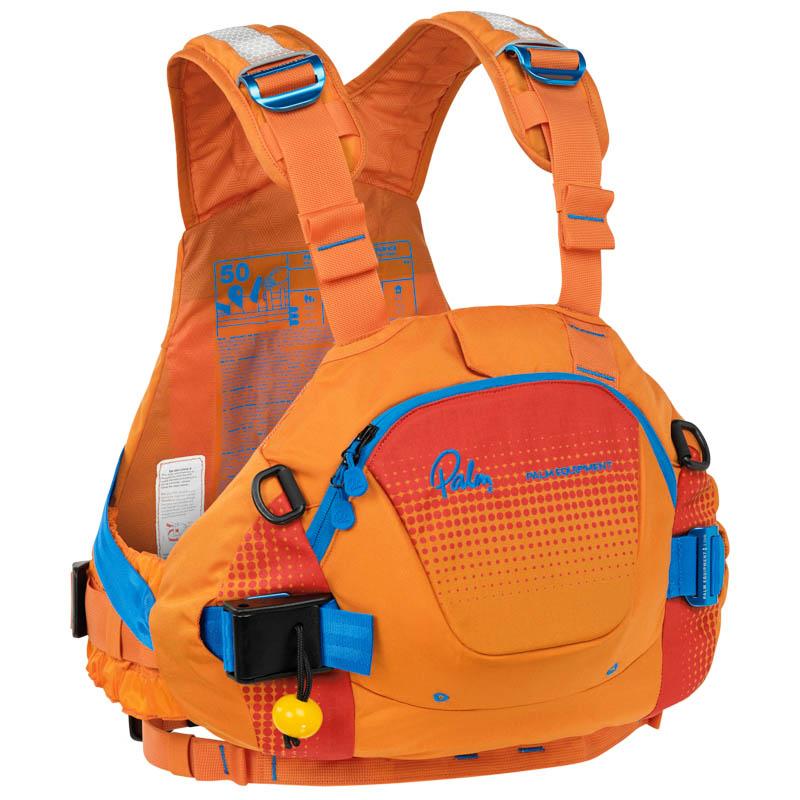
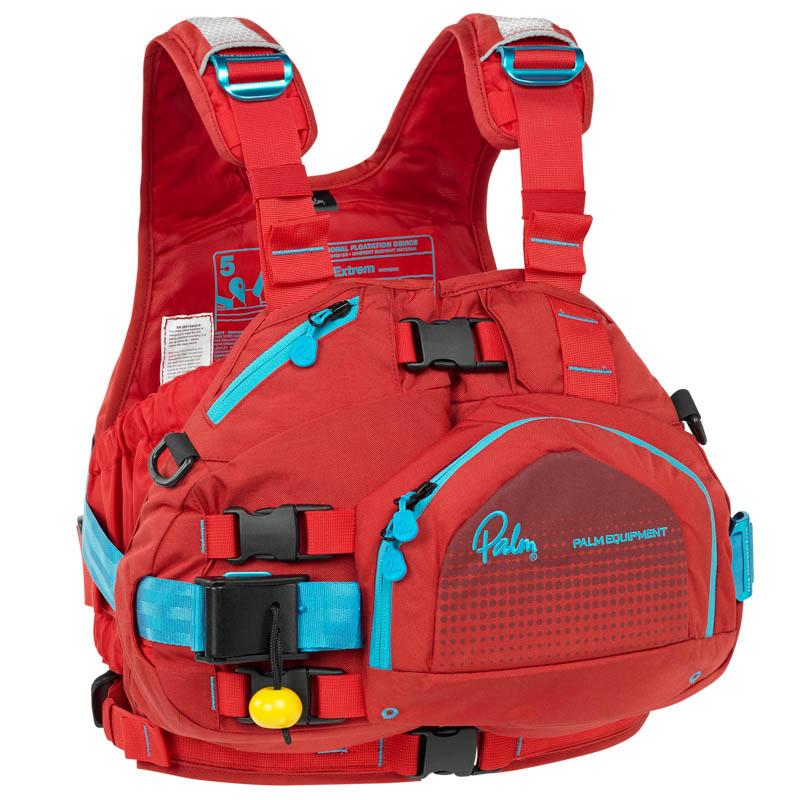
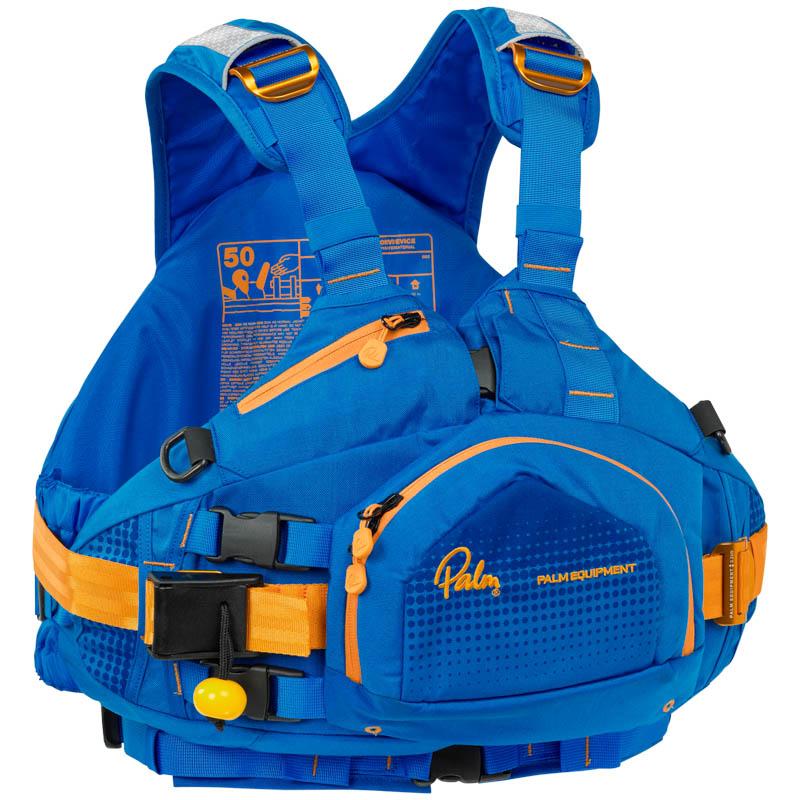
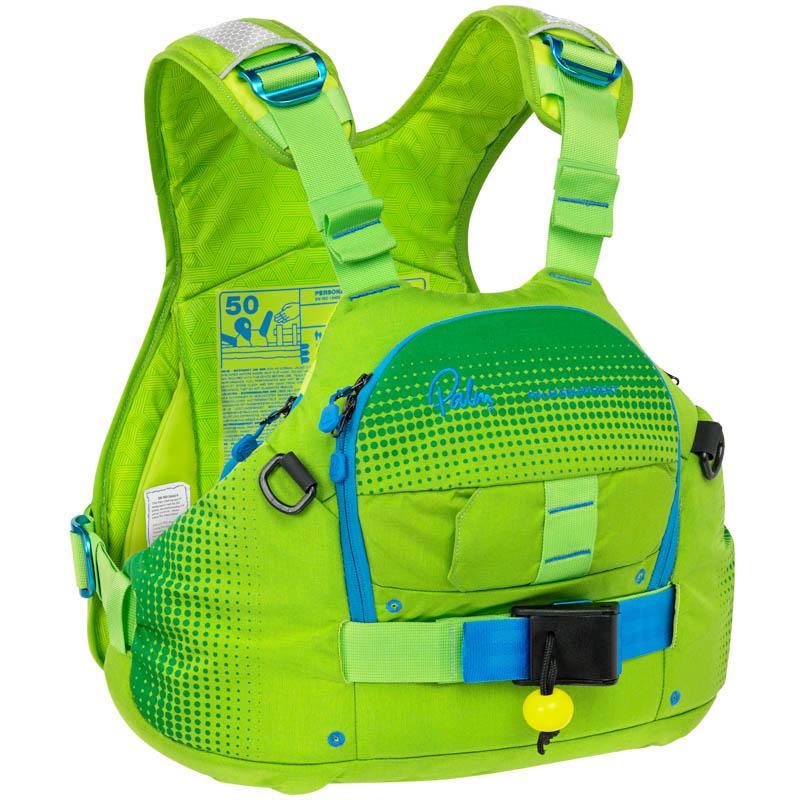
A good fit + float
A good fit is more important than the most float when you’re choosing your size. You’ll need to be able to move and swim effectively in your PFD and for it to comfortably stay put when you’re in the thick of it. Palm buoyancy aids have extra floatation over and above the fifty Newton ISO standard so you can be sure your Palm rescue buoyancy aid will have enough buoyancy to keep you afloat. Our unisex medium/large sized rescue PFDs have buoyancy upward of seventy Newtons (70 N).


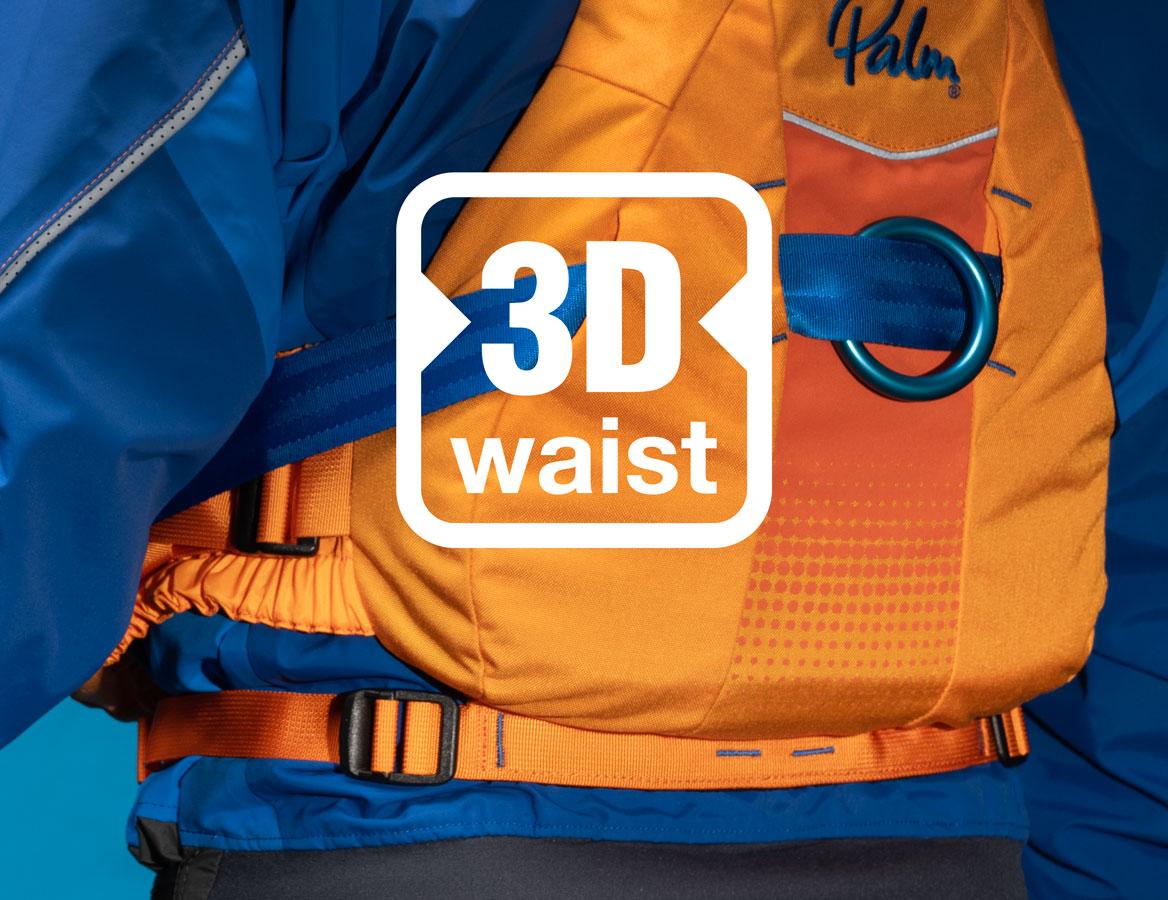
Your PFD should stay in place and not get in your way. Palm whitewater buoyancy aids have a 3D waist belt that fits snug up against your waist or the Nevis’ Delta Fit that hugs your torso. Both systems afford a firm, easy to adjust point of contact for the PFD around your body; and both have grippy silicone to help prevent ride-up of your PFD in action.
Paddlers come in all shapes and sizes, so the best way to know which PFD is best for you is by trying a range of sizes at your local shop. The size guides can only give you a suggestion of what you will find comfortable.
Clean tail release
Using a chest harness is a choice, best made after safety and rescue training and practice in a safe environment. Tethering yourself to the bank for a throwbag rescue in a slippery spot or entering the water to attempt a live-bait rescue has it’s own risks and a quick release for escaping the line is vital.
Quick release chest harnesses haven’t changed much since their invention in the 80s and all have had common problems: too much spare webbing can jam the quick release buckle when you need it to work; and to reduce the length of spare webbing they needed to be cut to length to fit the user – not great if you wear more layers underneath or want to lend your PFD to someone.
We have developed a harness system that is adjustable in length and releases every time in response to Research from the University of Central Lancashire1. The key result is that 3 cm of webbing protruding from your harness is the best length to ensure proper release – the action of opening the buckle pulls the 3 cm tail through, leaving no extra webbing behind, which can get twisted or caught in the buckle.
1 Onions C & Colins L (2013). A review of quick release harness performance in water rescue. International Journal of Emergency Services. Volume 2, issue 2. Colins L & Onions C (2014). Improving the performance of the quick release rescue harness. Journal of Search and Rescue. Volume 1, issue 3.
With this clean tail release system you no longer have to cut your chest harness to length or use your harness to adjust the fit of your PFD. Three simple steps get your harness safely set up:
- Thread the chest harness webbing through your PFD, metal load spreader and plastic quick release buckle.
- Set your webbing with 3 cm showing protruding from the quick release buckle.
- Tighten the size adjustment buckle on the chest harness until comfortable.
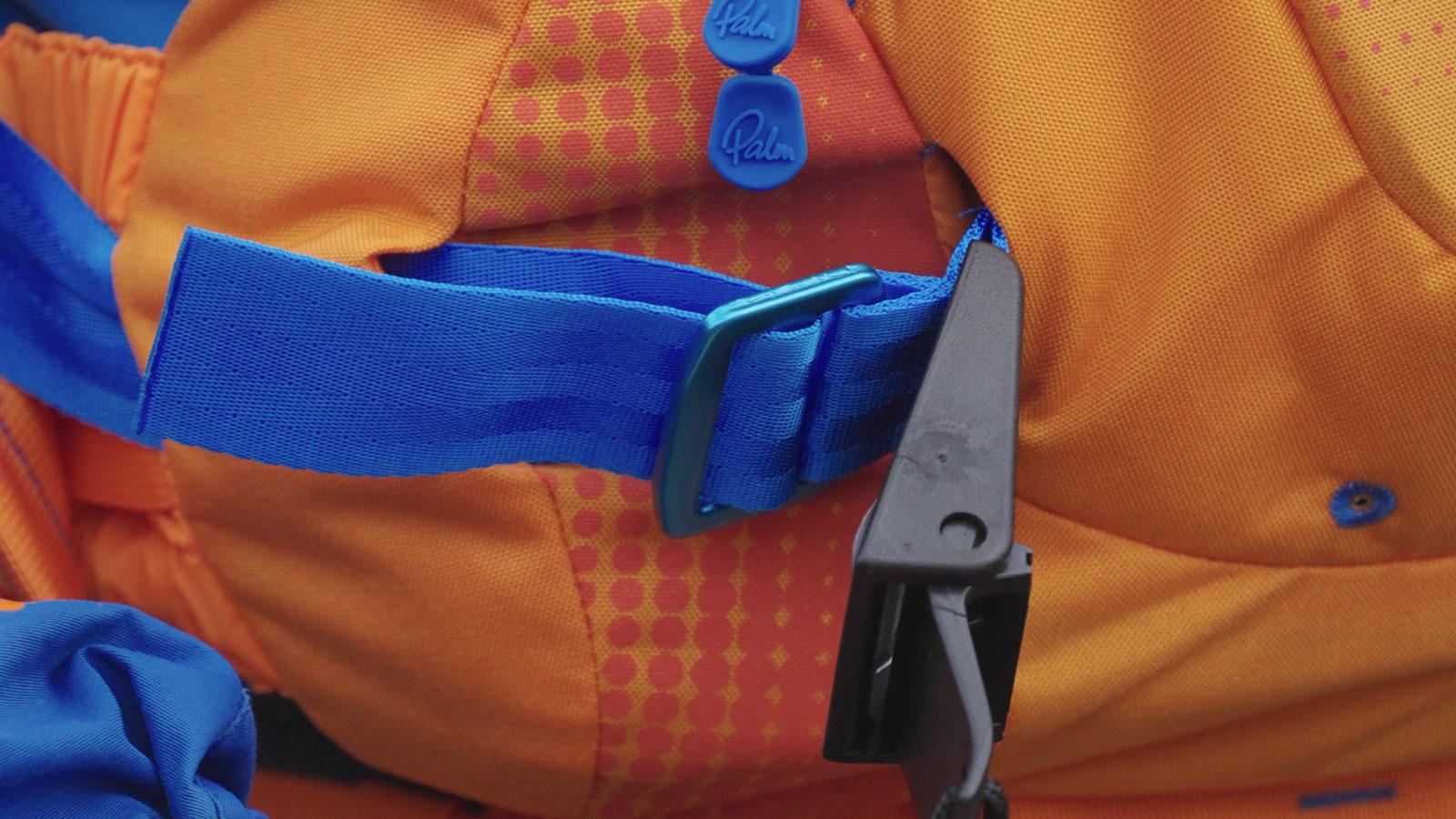


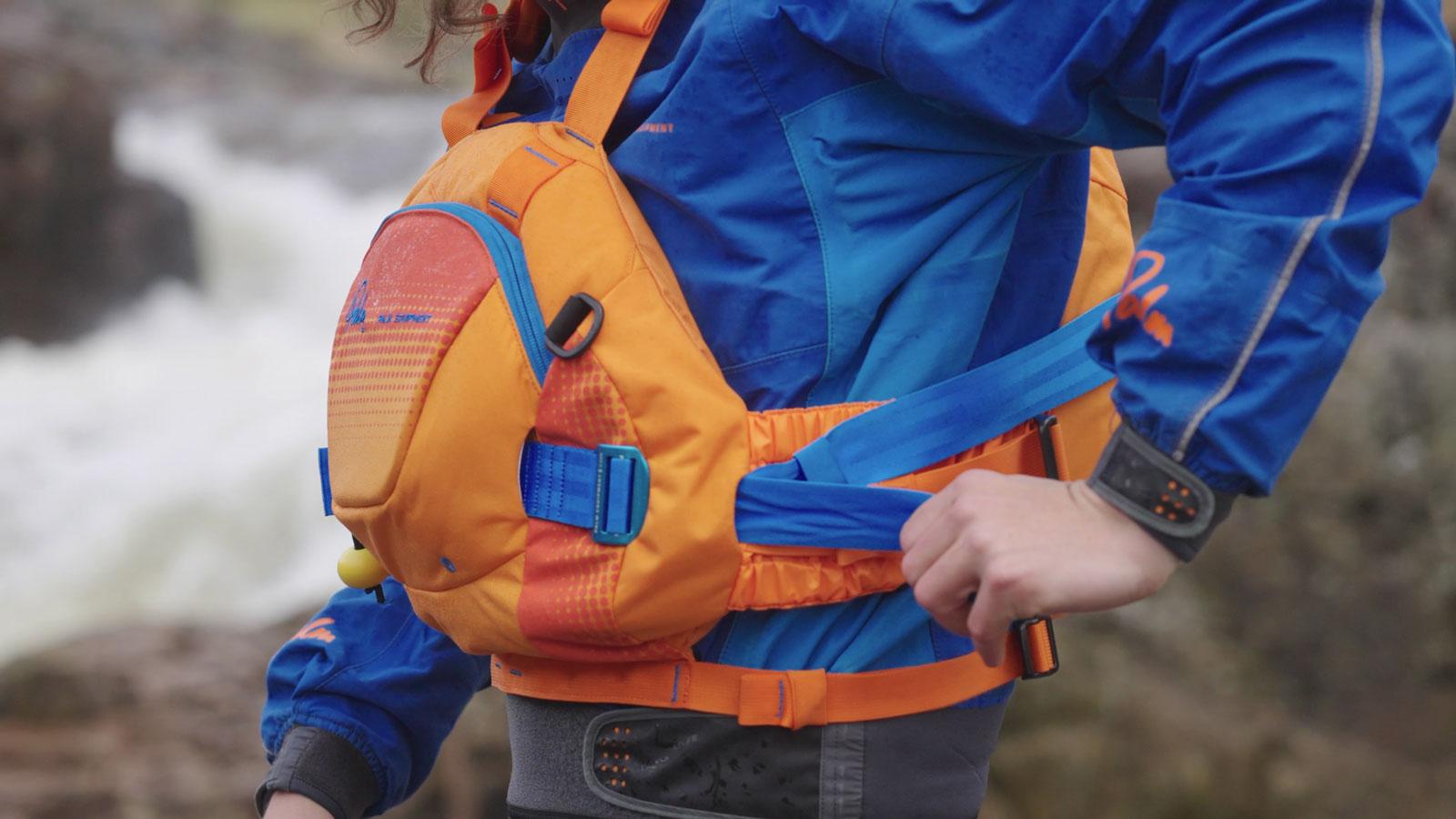
Old habits …
We’ve seen some people tightening their PFDs by pulling extra chest harness webbing through their buckles. The problem is that this will increase the risk of the webbing getting snagged when releasing the buckle. Research shows that 3 cm is the optimum length of webbing to leave because the arc of the buckle when released pulls the webbing through. Any more than this and there is a chance of the webbing folding/tangling in the buckle and snagging. And if you use the harness webbing (incorrectly) to tighten your PFD, when you have to release it you will find your PFD comes loose while you’re in the water. Always snuggly fit your PFD properly before taking in the slack on your harness, so releasing the harness has no effect on the fit of your PFD.
Extract Straps
When it comes to getting a helping hand and you need a lift from your buddies, you can have confidence in the strength and reliability of your Palm rescue PFD – load tested from corner to corner and top to bottom.
Rescue buoyancy aids from Palm have load bearing buckles on the shoulder straps, rated to 3.2 kN (320 kilos force), which extend through the buoyancy aid all the way down to, and sewn into the waist belt, so you can be sure they can handle the pressure.
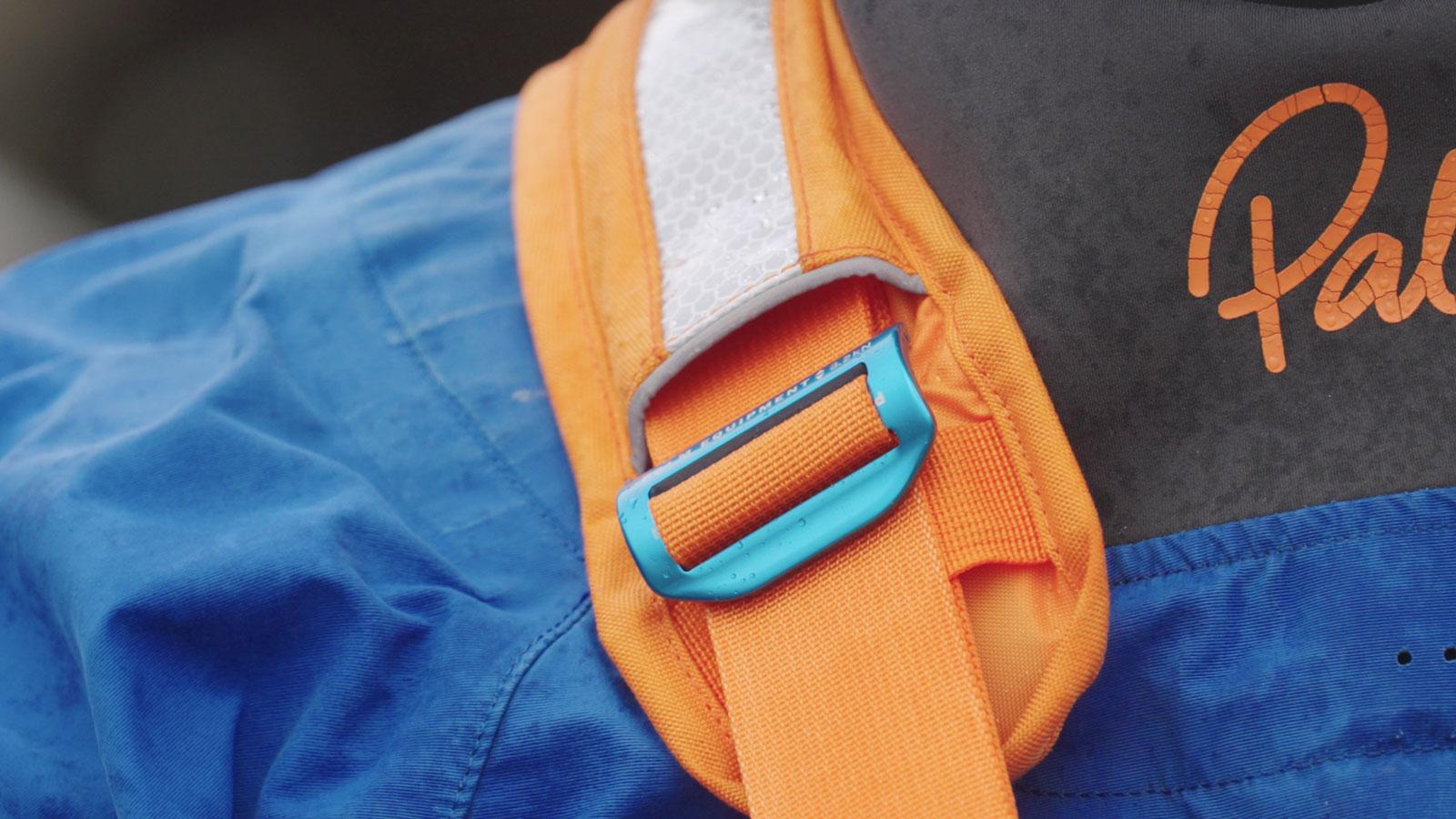
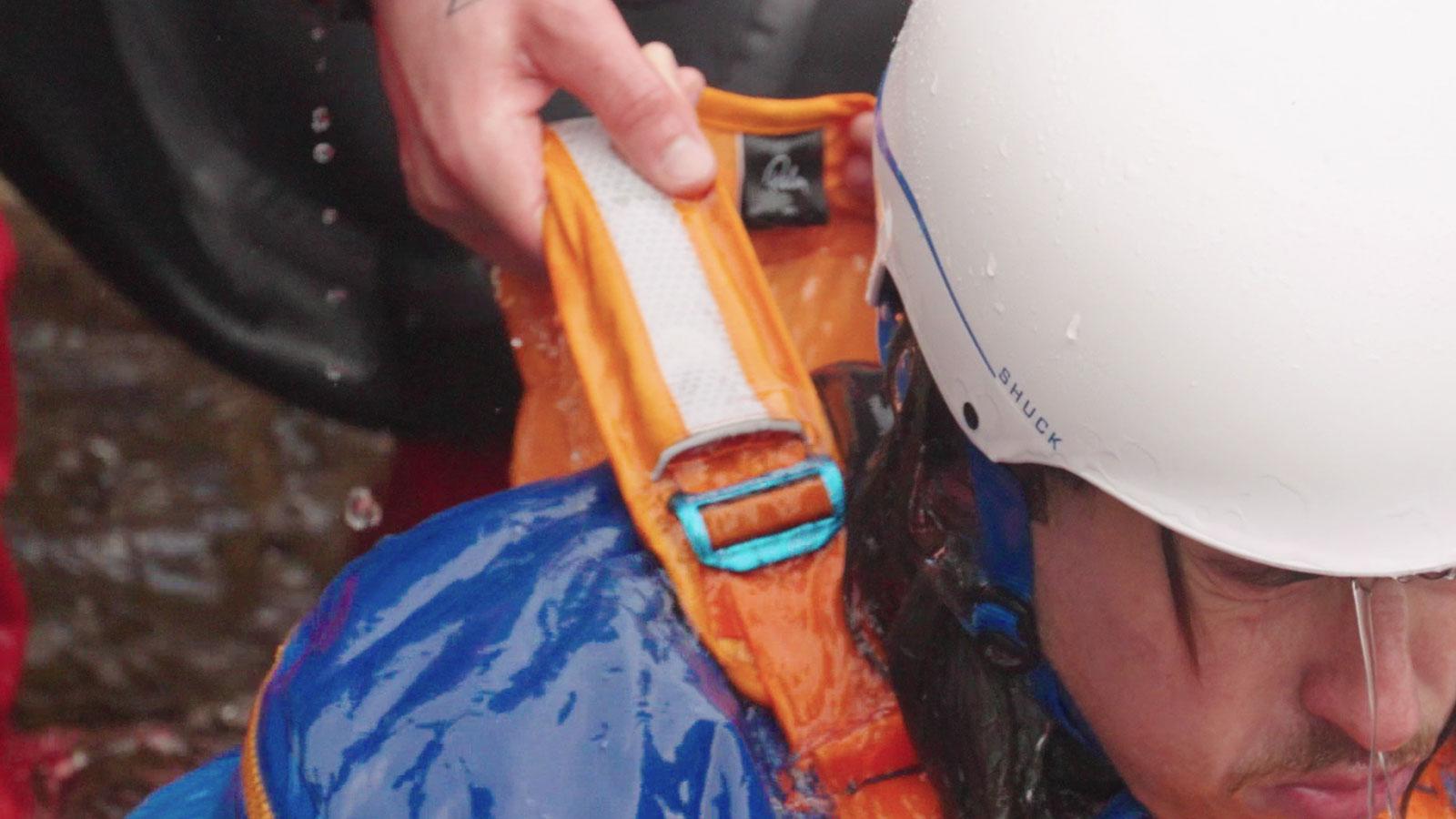
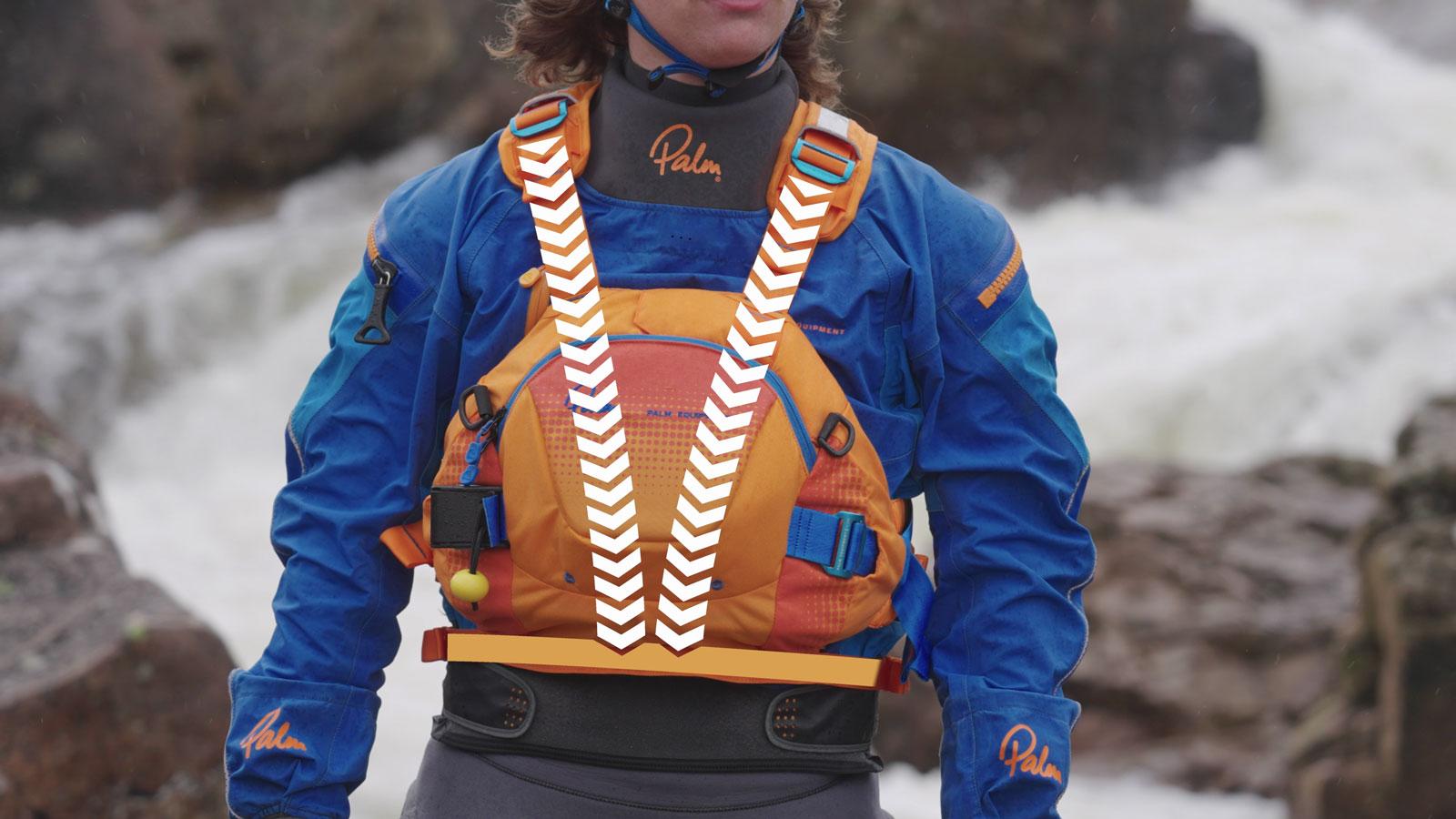
The new Extract Strap system with the new metal buckles replaces the Failsafe Shoulder Straps on older Palm rescue PFDs, which were also sewn through to a strong point on the waist belt.
More of what you love
Each of the Palm rescue PFD models have their own unique features, including the fit and foam template; as well as attachment points and storage for your whitewater emergency kit. They all use Gaia PVC free foam floatation, helping remove forever chemicals from our products. Gaia foam has great chemical resistance, low water absorption and is naturally mould resistant. One other thing they all share is 1% of profit on all sales of Palm whitewater PFDs goes to the Free Rivers Fund to support grassroots campaigns and river protection activists in fighting for free flowing rivers.
